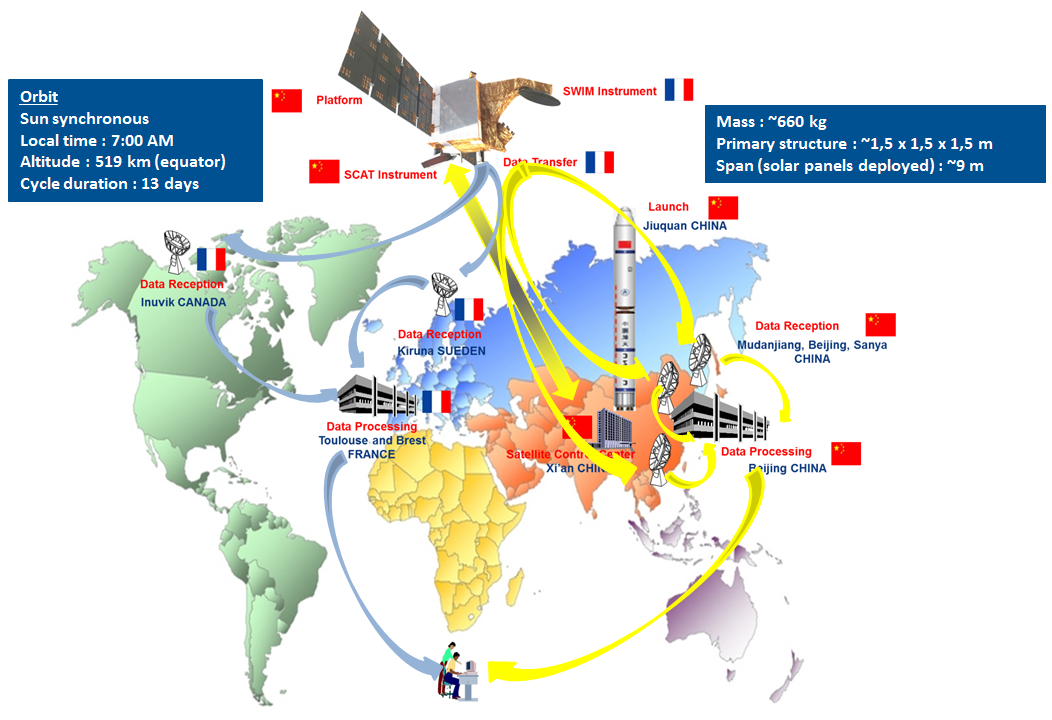


Source: China Daily
China is working jointly with France on the first satellite of its kind, an Oceanography Satellite known as CFOSAT, and has finished the prototype and begun production, according to Dong Xiaolong, assistant director of National Space Science Center, Chinese Academy of Sciences(CAS).
CFOSAT will measure the wind and waves on the ocean's surface, to provide weather forecasts for mariners and disaster warnings, Dong added. He also said that it will carry two major instruments - a French surface wave monitoring radar and a Chinese wind scatter meter, and, "The mission is scientifically important because it will help us improve our overall understanding of the oceans and climate variations, and it will benefit maritime businesses such as offshore engineering, fisheries, shipping, and coastal or harbor management.”
Dong made the remarks on the sidelines of the 2016 International Geoscience and Remote Sensing Symposium, in Beijing, which is sponsored by the Institute of Electrical and Electronics Engineers, the world's largest association of technical professionals, from July 10 to 15.

Work on CFOSAT began back in 2006, based on China's CAST 2000 satellite platform, which has been used for more than 10 satellites, said Wang Lili, its chief designer at the China Aerospace Science and Technology Corp, adding that plans call for it to be launched in 2018 atop a Chinese Long March carrier rocket.
In addition to CFOSAT, space authorities in the two countries have also agreed to increase cooperation in space-based astronomy with a Space Variable Objects Monitor satellite to study gamma-ray bursts, according to China National Space Administration.
Jean-Yves le Gall, the president of the French National Center for Space Studies, told the Xinhua News Agency in Paris earlier this month that this dynamic partnership in space is an icon of scientific and technological cooperation between the two countries.